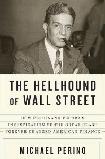Timeline of The G.O.P. Economic MeltdownPrior History • Bush Bankrupting The Country • Obama Fixing The Disaster •
2012 • 2016 • 2017

Prior Historical Events
- 1792 March-April: U.S. financial crisis dubbed the 'Panic of 1792', during which securities lost 25 percent of their value.
- 1837 May 10: Bank Panic of 1837, which caused an economic depression that lasted five years.
- 1869 Sept 24: Wall Street's 'Black Friday' panic after financiers Jay Gould and James Fisk attempted to corner the gold market.
- 1873 Sept 20: The financial 'Panic of 1873' swept the New York Stock Exchange in the wake of railroad bond defaults and bank failures, triggering the worldwide Long Depression that lasted 65 months.
- 1879 March: End of the worldwide Long Depression that lasted 65 months.
- 1893 June 27: The financial 'Panic of 1893' was a crash of the New York stock market caused by a run on the gold supply, the worst economic crisis to hit the nation in its history to that point.
- 1907 Oct 21: The financial 'Panic of 1907' began with a run on the Knickerbocker Trust Company of New York, dragging stocks down 37%.
- 1910 Nov: The secret meeting of U.S. bankers and financiers and government officials on Jekyl Island in Georgia to design a central bank for the U.S.
- 1913 Dec 23: Enactment by Congress of the Federal Reserve Act that created the Federal Reserve central banking system in the U.S.; immediately signed into law by President Wilson.
- 1926 Sept: The severe hurricane that devastated Miami, Florida was the final blow that burst the Florida land bubble and led to the economic Great Depression of 1929.
- 1929 Oct 24: Beginning of the stock market crash – referred to since as 'Black Thursday'.
- 1929 Oct 29: Further decline of the Dow Jones Industrial Average index; the infamous 'Black Tuesday' collapse of the New York stock market that began America's 'Great Depression'.
- 1932 March 4: Start of hearings by the U.S. Senate Committee on Banking and Currency on the causes of the stock market crash. Generally led by committee counsel Ferdinand Pecora [1882-1971], the hearings became known as the 'Pecora Commission'. The hearings were instrumental in passage of the Glass-Steagal Acts, the Securities Act of 1933, and the Securities Exchange Act of 1934; the commission ended hearings on 4 May 1934 and issued their final report.
- 1932 July 8: The Dow-Jones Industrial Average index hit bottom at 41.22 points, a loss of 89.19 percent since September 1929.
- 1933 March 4: President Franklin D. Roosevelt sworn into office.
- 1933 May 27: In response to the economic crisis, Congress passed the First Glass-Steagall Act.
- 1933 June 16: Congress passed the Second Glass-Steagall Act, which founded the Federal Deposit Insurance Company, and
separated commercial (consumer) banking from investment (speculative) banking.
- 1934 May 4: End of hearings by the U.S. Senate Committee on Banking and Currency on the causes of the stock market crash, and publication of the 'Pecora Commission' final report.
- 1935 Aug 14: The Social Security Act was signed into law by President Franklin D. Roosevelt.
- 1936 Feb: The Secretary of The Treasury and the Comptroller of The Currency were removed from the Board of Directors of the Federal Reserve, so that the federal government actually has no vote on any matter.
- 1972 Nov 14: The Dow Jones Industrial Average index closed above 1000 for the first time ever.
- 1974 Dec 9: The Dow Jones Industrial Average index dropped to a low of 577.60, a loss of 42 percent since November 1972.
National Debt in 1980: ONE TRILLION DOLLARS
which included the entire VietNam War
- 1981 Aug 13: Kemp-Roth Tax Cut signed into law by President Ronald Reagan.
- 1982 July: Collapse of the Penn Square Bank in Oklahoma City, the first of 139 Oklahoma banks that failed at the end of the Oil Boom Bubble of the 1980s.
- 1982 Oct 1: Congress passed the Garn-St. Germain Depository Institutions Act, which deregulated the savings & loan industry (cause of the Savings & Loan Crisis of the 1980s & 1990s); signed into law by President Reagan on 15 October.
- 1982 Oct 12: The Dow Jones Industrial Average index closed above 1000 again, the first time since the low of 577 in December 1974 (94 months).
- 1986 Oct 23: Tax Reform Act of 1986 signed into law by President Ronald Reagan.
- 1986 Nov: Wall Street arbitrageur Ivan Boesky pled guilty to securities fraud; he also revealed details of insider trading deals with financier Michael Milken and others, which led to an S.E.C. probe of Wall Street investment bank Drexel Burnham Lambert. Boesky served two years at Lompoc Federal Prison; Milken served 22 months at Pleasanton, California; both were banned for life from working in the securities industry.
- 1987 Jan 8: The Dow Jones Industrial Average index closed above 2000 for the first time.
- Mid-1987: Beginning of the Reagan-Bush Savings & Loan Crisis; 747 U.S. S&L/thrift banks failed. The total cost is estimated at $160 billion {$230 billion in 2010 dollars} including Bush 41's direct bailout of $125 billion {$180 billion in 2010 dollars}, paid for by taxpayers.
- 1987 June 2: President Reagan announced his nomination of Alan Greenspan to succeed Paul
Volcker as chairman of the Federal Reserve; Greenspan served for 18 years.
- 1987 Oct 19: 'Black Monday', the #2 worst one-day Dow-Jones Industrial Average decline of 22.6%, a loss of 508 points to 1,738.74.
National Debt in 1992: FOUR TRILLION DOLLARS
after the Reagan-Bush Years
- Clinton's First Term, 1993-96: Increase of National Debt was slowed to 25 percent, reaching five trillion dollars.
- 1997 Nov 24: The 'End Game' memo from Larry Summers to his boss Timothy Geithner confirming the Wall Street plan to deregulate banks and allow speculation in real estate derivatives (memo revealed to public by journalist Greg Palast in August 2013).
- 1998 April 3: The Dow Jones Industrial Average index's first close above 9,000.
- 1999 Nov 12: Sen. Phill Gramm [GOP-TX] successfully gutted the Glass-Steagall Banking Acts of 1933 with passage of the Gramm-Leach-Bliley Act, a major cause of the subprime mortgage meltdown of 2008.
- 2000 Dec 14: Sen. Phil Gramm [GOP-TX] pushed through the Commodity Futures Modernization Act, deregulating all derivatives trading (a major cause of The Enron Scandal in 2001); signed into law by President Clinton on December 21. This also deregulated petroleum futures traders, the cause of rising gas prices ever since.
- Clinton's Second Term: Increase of National Debt slowed still further; Clinton balanced the budget and created a Treasury surplus.
"[Bill Clinton] was the first Democrat to be re-elected since Franklin D. Roosevelt and, during his eight years in office, the nation enjoyed the greatest peace and prosperity in its history. Unemploy-ment fell to the lowest rate in modern times, while inflation declined to a 30-year low and welfare rolls shrank. Crime fell to levels unmatched in half a century and home ownership increased to historic highs. Clinton submitted the first balanced federal budget in decades and banked a staggering surplus. He failed to reform healthcare but elevated environmental protection to unmatched levels."
— Tim Rutten, Los Angeles Times, 23 June 2004
|

George W. Bush Bankrupting America
Official National Debt in 2001: 5.728 TRILLION DOLLARS
on the Monday after George Dubya Bush took office
- 2001 Jan 20: Usurper Republican George W. Bush sworn into office as the 43rd President of the United States.
- 2001 April: Working Minds Philosophy Essay #9 "Reason-Based Taxation"
- 2001 Dec: Working Minds Philosophy Essay #18 "The Stock Market Casino"
- 2002 March: The NASDAQ Composite index bottomed in the 1900s, a drop of 62% since March 2000.
- 2002 July 1: The NASDAQ Composite index closed at 5-year low of 1,403.80; DOW down to 9,109.79.
- 2002 Oct 9: The Dow Jones Industrial Average index bottomed at 7,286.27 (down 2.9% for a 5-year low).
- 2003 June 3: Mysterious federal ceremony claiming Republican victory in ending regulation of U.S. banks.
- 2004 Feb: Working Minds Philosophy Essay #40 "Paleo-Capitalism"
- 2004 April: Hearing at the S.E.C. that gave the five top Wall Street investment banks permission to release capital reserves to invest in 'exotic instruments'.
- 2005 Sept: Working Minds Philosophy Essay #54 "F*** The Fed"
The post-Katrina WMail ezine Issue #54 of September 2005 included the following prediction:
“Dubya can’t win in Iraq, and he failed totally in Louisiana, and the same blindness that caused the thousands of deaths in New Orleans will also trigger the collapse of the world economy.”
- 2006 Feb 1: Ben S. Bernanke sworn in as Chairman of the Federal Reserve, succeeding longtime Fed Chair Alan Greenspan.
- 2006 June: Henry Paulson sworn in as Secretary of Treasury, kept by Obama thru 2010.
- 2006 Sept: Nouriel Roubini of N.Y.U. warned at the I.M.F. meeting that the U.S. faced a severe housing crash, soaring oil prices, declining consumer prices, and defaults on mortgages worth trillions of dollars.
- 2006 Oct 19: The Dow Jones Industrial Average index closed above 12,000 for the first time, at $12,029.50.
- 2007 April 2: New Century Financial Corp. of Orange County, California – second largest sub-prime lender in the U.S. – filed Chapter 11 bankruptcy.
- 2008 March 14 (Friday): The Fed announced a 28-day 'backstop' loan agreement with JPMorgan Chase to prop up the liquidity of Wall Street investment bank Bear Stearns; the Fed announced later that evening that the loan guarantee would not be available on Monday, triggering a panic among investors.
- 2008 March 16: JPMorgan Chase agreed to buy Bear Stearns at $2/share, but foisted $29B of sub-prime paper onto the Fed.
- 2008 March 17 (Monday): The stock price of Bear Stearns plunged to $30 per share; JPMorgan Chase eventually paid roughly $10 per share for Bear Stearns (minus the toxic paper foisted on the Fed).
- 2008 July: Working Minds Philosophy Essay #78 "The Robber Barons"
- 2008 July: All-time high average U.S. gasoline pump price of $4.11 per gallon.
- 2008 Sept 7 (Sunday): Henry Paulson agreed to a government takeover (i.e. bailout) of Fannie Mae & Freddie Mac; actual cash outlay was eventually $34.2B to Fannie Mae and $51.7B to Freddie Mac – while $5.4 trillion in outstanding and very risky mortgage debt remain on the books.
- 2008 Sept 9: Lehman Brothers stock plunged 45 percent.
- 2008 Sept 14: Under pressure to complete negotiations started in November 2007, Bank of America bought Wall Street investment bank Merrill Lynch for $50 billion worth of BofA stock, or about $29 per share (a 38 percent premium over book value, but a 61 percent discount to the September 2007 market price).
- 2008 Sept 15 (Monday): Giant stock broker/mortgage lender Lehman Brothers filed Chapter 11 bankruptcy.
- 2008 Sept 15 (Monday): The Dow Jones Industrial Average index fell 504 points, the largest one-day loss since 11 September 2001.
- 2008 Sept 16 (Tuesday): The Fed agreed to a 'secured loan facility' for up to $85B to insurer A.I.G. in exchange for 80 percent equity in the company.
- 2008 Sept 17 (Wednesday): The Dow Jones Industrial Average index dropped 450 points: down 8% for the week, and then back up on Thursday & Friday.
- 2008 Sept 17 (Wednesday): Gold rose $70 per ounce, the largest one-day jump in history.
- 2008 Sept 18 (Thursday): The Dow Jones Industrial Average index climbed 410 points.
- 2008 Sept 19 (Friday): The Dow Jones Industrial Average index climbed 368 points.
- 2008 Sept 21 (Sunday): Goldman Sachs and Morgan Stanley, the last two major investment banks in the United States, both confirmed that they would become traditional bank holding companies, bringing an end to the era of investment banking on Wall Street.
- 2008 Sept 23 Capitalist Warren Buffett bought $5B of stock in Goldman Sachs.
- 2008 Sept 25: The U.S. Office of Thrift Supervision siezed Washington Mutual Bank after a ten-day run withdrew 9 percent of assets; JPMorgan Chase paid $1.9B for Washington Mutual Bank later that day.
- 2008 Sept 26: Wachovia Bank stock plunged 27 percent, while depositers withdrew $5B (1 percent of assets) on the same day.
- 2008 Sept 29: The F.D.I.C. announced the takeover of Wachovia's operations by Citigroup, a temporary measure intended to prevent Wachovia from failing.
- 2008 Oct 3: Wells Fargo agreed to acquire failing Wachovia for $15.1B in stock, which nullified the Citigroup deal. (Citigroup is pursuing claims for $60B in damages.)
- 2008 Oct 3: Congress passed a $700 billion Wall Street bailout bill.
- 2008 Oct 6 (Monday): The Dow Jones Industrial Average index plunged below 10,000 for the first time since 2004.
- 2008 Oct 7 (Tuesday): The Dow Jones Industrial Average index dipped over 500 points.
- 2008 Oct 6-7: Global stock market losses of $6.5 trillion (per Time Magazine, 10/2008)
- 2008 Oct 8: The I.M.F. predicted that the U.S. economy will grow just 0.1% next year, its worst rate in 18 years.
- 2008 Oct 8 (Wednesday): Nikkei Index plunged 9.4 percent; Indonesia shut down the country's exchange after the key index plunged more than 10 percent; Moscow's MICEX stock exchange shut down until Friday after losing more than 14 percent in the first half-hour of trading; Hong Kong's Hang Seng Index lost 5.2 percent; India's Sensex sank 4.3 percent; South Korea's Kospi Index lost 5.8 percent; Taiwan's key index fell 5.8 percent; and Singapore's benchmark tumbled 5.5 percent.
- 2008 Oct 9 (Thursday): The Dow Jones Industrial Average index fell as low as 8,955.84 and ended the day down at 9,006 points.
- 2008 week of Oct 6-10: The Dow Jones Industrial Average index suffered the worst week in a hundred years, falling 18 percent.
- 2008 Oct 13 (Monday): The Dow Jones Industrial Average index jumped 400 points by 8:30 a.m., up 976 points by end of day (biggest one-day point gain ever), and the S&P index rose 104 points (also the biggest one-day point gain ever).
- 2008 Oct 23 (Thursday): Fed Chairman Alan Greenspan warned of a 'credit tsunami'.
- 2008 Nov: The U.S. Federal Reserve began its first round of bond-buying (called 'Quantitative Easing' or QE1); the $1.7 trillion boost to the economy took place gradually thru March 2010.
- 2008 Nov 4: Democrats won the national elections for President and for many Senate & Congress seats; Barack Obama won the election for the U.S. Presidency with 52% of the popular vote, and with 365 electoral votes to John McCain's 173 electoral votes.
- 2008 Nov 10: The Federal Reserve & Treasury paid out another $27.5 billion for A.I.G. losses, making a total of $150B.
- 2008 Nov 17 (Monday): Japan declared a recession, the first since 2001 – and most people there blame the U.S.
- 2008 Nov 19: U.S. Senate hearing on the automotive crisis, with unsworn testimony by the heads of Chrysler, Ford & General Motors.
- 2008 Dec: Secret, interest-free loans by the U.S. Federal Reserve of $1.2 trillion to troubled 'too big to let fail' banks – including $107 billion to Morgan Stanley, $100 billion to Citigroup, and $91 billion to Bank of America – that were not revealed until August 2011.
- 2008 Dec 9: Negotiators revealed the terms of an emerging deal between the Bush White House and Congress under which a short-term $15 billion bailout for the Big Three would be overseen by a federal trustee (or 'car czar').
- 2008 Dec 19: President Bush announced approval of the automaker bailout plan, which would give loans of $17.4 billion to G.M. and Chrysler,
- 2008 Dec 31: At year-end, the Dow Jones Industrial Average index had fallen nearly 34 percent, the worst since 1931; the S&P index was down 38.5%, the worst since 1937.
Official National Debt in 2009: 10.626 TRILLION DOLLARS
on the day George Dubya Bush left office (an 86% increase).
The true Republican National Debt: 25 TRILLION DOLLARS
on the day that Dubya left office
— an increase of 336 percent in eight years,
giving George W. Bush the inenviable record
as the person who ran up the most debt in the history of Mankind !!

Barack Obama Fixing The Disaster
- 2009 Jan 20: Barack Obama sworn in as the 44th President of the United States.
- 2009 Feb 13: The American Recovery and Reinvestment Act of 2009 was passed in Congress; no Republicans in the House and only three Republican Senators voted in favor. The bill included $288 billion in tax cuts, $357 billion for federal spending programs, and $144 billion to state & local fiscal relief.
- 2009 Feb 17: The 'recovery package' bill was signed into law by President Obama, adding $787 billion and 3.5 million jobs to the floundering American economy.
- 2009 March 9: The Dow Jones Industrial Average Index bottomed at 6,547, a 12-year low.
- 2009 April 30: Chrysler Motors and 24 affiliates filed for Chapter 11 bankruptcy protection after talks with lenders broke down.
- 2009 June 1: General Motors filed for Chapter 11 bankruptcy protection.
- 2009 June 10: Chrysler Motors and affiliates emerged from bankruptcy (backed by $6.6B in financing from the federal government), and immediately sold several divisions to Fiat of Italy.
- 2009 July 10: General Motors ended bankruptcy proceedings.
- 2009 Nov: "The stock market is down 26% since 2000. (Inflation-adjusted, it's even worse.)"
— Time Magazine
- 2009 Nov: "There are six times as many Americans seeking work as there are job openings."
— Paul Krugman, in The New York Times

- 2010 May 6 (Thursday): The Dow Jones Industrial Average Index had a record freefall event: in half an hour the stock market dropped more than it has ever dropped, all at once, 998.50 points (an intra-day loss of 9.2 percent), but managed to end the day down only 347 (-3.19%); the event was later named the '2010 Flash Crash'.
- 2010 May 7 (Friday): The unstable Dow Jones Industrial Average Index plunged another 140 pts, and closed down 672 points (-5.71%) for the week.
- 2010 Aug: Working Minds Philosophy Essay #92 "Reason-Based Taxation 2010"
- 2010 Nov: The U.S. Federal Reserve began its second round of bond-buying (called 'Quantitative Easing' or QE2); the $600 billion boost to the economy took place gradually thru June 2011.
- 2010 Nov 17: The General Motors post-bankruptcy IPO, the biggest initial public offering in U.S. history, raised $20.1 billion: 478 million common shares at $33 each for $15.77 billion and $4.35 billion in preferred shares.
- 2011 Jan 27: The Financial Crisis Inquiry Commission released its "Final Report On The Causes of The Financial Crisis In The United States" {see below}.
- 2011 Aug 4 (Thursday): The Dow Jones Industrial Average index fell $512.76 – closing at $11,383.68 – the steepest point decline since 1 December 2008; S&P 500 futures fell 0.6 percent to $1,191.7. In worldwide trading over the next 24 hours London's FTSE 100 declined 3.5 percent to 5,393.14, Germany's DAX shed 3.8 percent to $6,172.00; France's CAC-40 lost 2.5 percent to 3,238.80; Japan's Nikkei 225 stock average slid 3.7 percent to 9,299.88; Hong Kong's Hang Seng index dived 4.3 percent to 20,946.14; China's Shanghai Composite Index lost 2.2 percent to 2,626.42.
- 2011 Aug 5 (Friday): The Dow Jones Industrial Average index fell 5.8 percent for the week; the S&P 500 fell 7.2 percent for the week and is down 10.8 percent since July 22; the NASDAQ Composite index fell 24 points, or 0.9 percent, and was down 11.4 percent since July 22.
- 2011 Aug 5: Standard & Poor's did not like Congress's solution to the artificial debt ceiling crisis and downgraded the long-term credit rating of the United States government from AAA to AA+.
- 2011 Aug 8 (Monday): The Dow Jones Industrial Average index fell another 634.76 points – closing at $10,809.85 – a loss of 5.55 percent.
- 2011 Aug 10 (Wednesday): The Dow Jones Industrial Average index fell another 519.83 points – closing at $10,719.94 – for a further loss of 4.62 percent.
- 2011 Friday Aug 19: U.S. stocks fell for the fourth week. The Dow Jones Industrial Average index closed at $10,817.65, down 4 percent for the week and down 15 percent since July 21. The S&P 500 stock index closed at $1,123.53, down 4.7 percent for the week (all ten industry groups that make up the index fell). The NASDAQ Composite index fell to 2,341.84, down 6.6% for the week.
- 2011 Oct 31: Major hedge fund M.F. Global filed for bankruptcy; considered the first U.S. victim of the European sovereign debt crisis.
. . . and you thought the crises were over!
- 2012 May 1: The Dow Jones Industrial Average index reached a new closing high of 13,279.32, closing at its highest level since 28 December 2007.
- 2012 May 10 (Thursday evening): Jamie Dimon, CEO of JPMorgan Chase bank, announced that the company suffered $2 billion in losses for the second quarter, due to uncleared derivatives hedge transactions by a London employee; the amount may turn out to be six or even eight billion dollars higher.
- 2012 May 11 (Friday): JPMorgan's stock price fell by 9.3 percent, wiping out $14.4 billion of the company's value
- 2012 May 14 (Monday): JPMorgan's stock price fell by another 3.2 percent; shares in Bank of America fell 2.7 percent.
- 2012 June 13: Under pressure from Congress, the New York Federal Reserve released documents going back to 2007 that show complicity between the U.S. Federal Reserve System and British banks in faking the crucial L.I.B.O.R. {London Interbank Offered Rate} international benchmark interest rates.
- 2012 July 10: Peregrine Financial Group of Cedar Falls, Iowa filed bankruptcy after trying to conceal and then failing to recover from a shortfall of $200 million in customer accounts; CEO Russell Wasendorf has admitted embezzling for at least 20 years.
- 2012 July 13 (Friday): JPMorgan Chase bank announced that the bad trade deal in U.K. has ballooned to a loss of $5.8 billion.
- 2012 Sept: U.S. Federal Reserve Chairman Ben Bernanke announced a third round of bond-buying (called 'Quantitative Easing' or QE3) as an open-ended monthly boost to the economy; the program starts with $85 billion per month until January, and $40 billion per month after that; the program could last for three years and might add up to $1.4 trillion.
- 2012 Sept: "Moody's Analytics estimates that the housing crisis wiped out $4.3 trillion in owner-occupied-home values from 2007 to 2010." — per TIME Magazine
- 2012 Nov 6: U.S. National Election for President & 35 Senators and all 435 Congress members, plus many state-level seats; incumbent Democrat Barack Obama beat Republican Mitt Romney, capturing 332 electoral votes to Romney's 206.
- 2012 Nov 7: Stock market 'sell-off', the worst trading day in 2012: the Dow Jones Industrial Average Index dropped below 13,000 (down 313 points, or 2.4%); the NASDAQ and S&P 500 also each sank more than 2%. (Wall Street's emotional reaction had more to do with European economic austerity events than the U.S. elections.)
- 2012 Dec: The U.S. Treasury sold its remaining stake in insurer A.I.G. at a profit of $22.7B, then announced that it is selling 200 million shares back to General Motors by year-end, followed by sale of its remaining stake in G.M. in the next 12 to 15 months (the G.M. deal is expected to produce a net loss of $36B for taxpayers).
- 2013 March 1: The 2011 'sequester' bill of the Republican Congress went into effect, stripping funding for many government programs and laying off or furloughing thousands of teachers, health workers, firefighters, and other government employees.
- 2013 Tuesday Oct 1: The Republitards in Congress escalated their tantrum and shut down large parts of the federal government, which put 800,000 government employees out of work, closed the national parks, halted oversight by the I.R.S. and other agencies, froze passport processing, and generally messed with the non-recovered economy – because President Obama stood his ground and refused to approve the Keystone pipeline, to reduce taxes for the One Percent, to allow unregulated drilling for oil & gas, and other stealth provisions of the legislation as proposed by the constipated House of Representatives.
- 2013 Wednesday Oct 16: The idiots of the Republican-led Congress folded at the last minute and ended the 16-day government shutdown impasse; the U.S. Senate voted a late-evening bipartisan 81-18, and the House then voted 185-144, while President Obama waited at the White House to apply his signature to a 'clean bill' that matched his proposal of two weeks prior; federal workers went back to work on Thursday and national parks & other facilities reopened, following what is being called the "16-Day TEA Party Shutdown"; the cost of this fiasco was elimination of $24 billion from the U.S. economy.
- 2014 July 3: The Dow Jones Industrial Average Index rose above 17,000 for the first time in history, closing at $17,068.20.

Anybody Still Think It's Over ?
- 2016 Jan: Barnes and Noble booksellers announced plans to close 197 bookstores over the next five years.
- 2016 Jan: Finish Line Inc. announced that it is closing the lowest-performing 150 of its 600 name-brand 'athleisure' clothing stores.
- 2016 Jan 15: Wal-Mart, Inc. announced that it plans to close all of its 102 Wal-Mart Express stores as well as 52 full-size U.S. locations, while stepping up its digital sales efforts.
- 2016 March: Sports Authority filed Chapter 11 bankruptcy and announced plans to close 140 stores.
- 2016 March 22: After reporting a 20% drop in fourth quarter profit, the Kohl's department store chain announced that it is closing 18 stores and laying off more than 1,500 employees.
- 2016 May: The Aeropostale teen apparel chain filed for bankruptcy and said that it will close 154 stores; the plan was later expanded to closing 570 of its 800 stores.
- 2016 May 20: After failing to find a buyer, Sports Authority announced closing & liquidation of all its 460+ locations in the U.S.
- 2016 June: Luxury fashion brand Ralph Lauren announced plans to cut about 1,000 jobs (8% of its workforce) while closing more than 50 stores. (The retailer's sales fell in every quarter in fiscal 2016, leading to a full-year sales decline of nearly 3%.)
- 2016 July: The Wall Street Journal declared a state of 'worldwide economic stagnation', based on a new study by the Mckinsey Global Institute that said: "Across 25 of the world’s advanced economies, about two-thirds of the population – more than half a billion people – earn the same as or less than their peers did a decade ago".
- 2016 July: After Hastings Entertainment filed Chapter 11 bankruptcy and failed to find a buyer, the seller of books & DVDs plans to liquidate all 126 stores.
- 2016 Aug: After already closing 400 stores during the Office Max - Office Depot merger, Office Depot announced plans to close 300 more stores in the next three years. (The proposed merger with larger Staples was scrapped over antitrust concerns.)
- 2016 Nov: After suffering seven consecutive quarters of declining sales, The Gap's North American operations announced plans to close 65 stores across its Gap, Gap Kids, Old Navy, and Banana Republic retail clothing brands; they already pulled the Old Navy brand out of Japan entirely, closing over 50 stores.
- 2016 Dec:
- Sears announced that it will close 17 Sears locations and 34 Kmart stores in early 2017 (liquid-ation sales to begin in January, closings between late March and
mid-April). This latest round brings the total number of Sears stores closed this fiscal year to more than 200, and means that the retailer will have fewer than 1,500
stores left by early 2017, down nearly 60% from 2011 when Sears had more than 3,500 stores.
- Clothing retailer Children's Place closed 125 stores in 2016 and plans to close 200 more in 2017; it operates about 1,000 stores throughout the U.S.
- Tailored Brands, which operates the Men’s Wearhouse and Jos. A. Banks stores, is in the process of closing as many as 250 stores.
- Chico’s FAS, which operates the Chico’s, White House Black Market, and Soma stores, announced that it will cut 240 jobs and close 120 stores by the end of 2017.
- American Eagle Outfitters continues its 2014 three-year initiative to close as many as 150 stores to keep costs down and boost declining sales and profits.
- 2016 Dec 20: Walgreens announced that it will sell 865 Rite Aid stores to Fred's Pharmacy for $950 million to address F.T.C. antitrust concerns about the proposed merger with Rite Aid; but Bloomberg News reports that those divestitures haven't satisfied the F.T.C.
- 2016 Dec 30: The stock market continues to expand the inevitable bubble: Dow Jones Industrial Average Index closed at $19,762.60 (its best year since 2013); the Standard & Poor's 500 closed at $2,238.83; and the NASDAQ Composite Index closed at $5,383.12.
- 2017 Jan: Blaming a disappointing holiday season, Macy’s Department Stores announced that it aims to cut costs by closing some stores and slashing 10,000 jobs.
- 2017 Jan 6: The Limited women's apparel chain announced plans to close all of its 250 stores, with loss of about 4,000 jobs.
- 2017 Jan 27: The Wet Seal teen fashions chain of California announced plans to close the last 170 of its stores; two years ago the chain filed for Chapter 11 bankruptcy protection, closed two-thirds of its locations, and laid off almost 3,700 workers.
- 2017 Jan 27: Walgreens and Rite Aid revised their proposed merger deal, slashing more than $2 billion from the purchase price and pushing the closing date back six months while they await regulatory approval; the tentative deal is now scheduled to close July 31. Walgreens originally agreed to pay $9 per share for Rite Aid's common stock, but has now agreed to pay $7 per share if 1,000 or fewer stores have to be sold, and $6.50 per share if 1,200 stores must be sold.
- 2017 Feb 24: J.C. Penney will close up to 140 stores, offering buyouts to many employees.
- 2017 March 9: Staples announced plans to close 70 more stores; the latest store closings come on the heels of 48 closings last year, and a combined 242 stores closed in the two prior years; at the start of the current fiscal year, Staples had 1,255 U.S. stores and 304 Canadian locations.
- 2017 March 17: RadioShack [est. 1921] filed for bankruptcy for the second time and is closing 552 (36 percent) of its stores.
- 2017 April 4: Payless ShoeSource [est. 1956] filed for Chapter 11 bankruptcy and announced a restructuring plan that includes the immediate closure of 400 stores in the United States and Puerto Rico.
- 2017 July 20: The NASDAQ Composite Index set an all-time record at $6,390; several other NASDAQ indexes also set new records.
- 2017 Nov 30: The Dow Jones Industrial Average closed above $24,000 for the first time in history after surging by 331 points, or 1.4 percent; the S&P 500 closed at $2,647.58 and the Nasdaq Composite closed at 6,873.97 — all three indexes set record highs.
- 2017 Dec 7:
 Cryptocurrency Bitcoin rose to hyper-inflated $15,000, a rise of 20% in just one day, on the news that two Chicago exchanges will be trading Bitcoin futures starting next week. Cryptocurrency Bitcoin rose to hyper-inflated $15,000, a rise of 20% in just one day, on the news that two Chicago exchanges will be trading Bitcoin futures starting next week.
- 2017 Friday Dec 22:
 Cryptocurrency Bitcoin opened low and dropped lower, all the way to $10,834.94; the effective close mid-day was $13,558.38, a loss of 12.87% and also a loss of 27% for the week. Cryptocurrency Bitcoin opened low and dropped lower, all the way to $10,834.94; the effective close mid-day was $13,558.38, a loss of 12.87% and also a loss of 27% for the week.
- 2017 End of Year 'death watch' for retail companies that are expected to collapse in 2018:
Barnes & Noble: continued losses are up 50%;
Bi-Lo: the parent company of the Winn-Dixie grocery store chain, has roughly $1B in debt and is in danger of default;
Bon-Ton Stores: has been closing stores, with 40 more closings in 2018;
Charlotte Russe: mall-based retailer is losing business to online shopping;
Charming Charlie: mall retailer recently filed for bankruptcy, plans to close around 100 stores;
G.N.C.: turned a smaller third quarter profit of only $21.5M, and that's not much of a profit on $609.5M in sales, but it's better than a loss;
J.C. Penney: sales are up but still iffy, lost $128M in third quarter; J. Crew: net loss of $161M in first nine months of 2017;
Nine West: shoe retailer declared bankruptcy in 2017 and has closed many of its stores, usually when the lease expires, they appear to be shifting to online sales;
Payless: shoe retailer closed 800 stores during its bankruptcy proceedings (ended April 2017), but it still has about 3,500 vulnerable locations left around the world;
Sears Holdings: has $8.1B in assets and $12B in debt; the Sears Hometown and Outlet Stores division is struggling;
Toys R Us: filed bankruptcy September 2017, and in January announced closure of 60 stores - survival chances about even;
and Vitamin World: filed for bankruptcy in September 2017, planned to close 124 of its 345 stores and sell the rest to another company, but are now selling off all assets.
- 2018 Jan 4: The Dow Jones Industrial Average Index hit a history-making $25,075.13, just 19 trading sessions after it hit 24,000.
- 2018 Jan 12: Wal-Mart, Inc. announced that it will close 63 Sam's Club stores in 24 states and Puerto Rico; as many as 11,000 workers will lose their jobs. Later in the month, Wal-Mart announced elimination of 400 to 500 jobs at its headquarters.
- 2018 late January: The U.S. economy grew at a 2.6 percent annual rate in the fourth quarter. The mark was underwhelming after 3.2 percent {Obama carryover} growth in the third quarter raised expectations. Overall, American G.D.P. grew by only 2.3 percent in 2017. Troublingly, consumer spending has risen faster than disposable income, and individual saving is at a near-record low. (per The Washington Post and The New York Times)
- 2018 Jan 29-30: The Dow Jones Industrial Average dropped on Monday & Tuesday, a two-day, 540-point (2.04%) selloff.
- 2018 Feb 2: The Dow Jones Industrial Average Index closed at $25,520.96, down 665.75 points (2.54%), the S&P 500 fell 2.12 percent, and the NASDAQ 5-day loss was 3.53% – making this the worst week for market measures in two years.
- 2018 Monday Feb 5: Another really bad market day: The Dow Jones Industrial Average Index closed at $24,345.75, down 1,175.21 points (4.60%!), the S&P 500 Index closed at $2,648.94 - a loss of $113.19 (4.10%), and the NASDAQ Composite Index fell 273.42 points (3.78%) to close at $6,967.53. Japan’s Nikkei Index stock average dropped more than 6 percent on Tuesday, after falling 2½ percent a day earlier; Hong Kong’s Hang Seng Index sank nearly 4 percent, as markets in Australia, Korea and China also fell.
- 2018 Thursday Feb 8: Still another really bad market day: The Dow Jones Industrial Average Index closed at $23,860.46, down 1,032.89 points (4.15%!), the S&P 500 Index closed at $2,581.00 - a loss of $100.66 (3.75%), and the NASDAQ Composite Index fell 274.82 points (3.90%) to close at $6,777.16. Global stocks followed, sinking on
Friday. The losses left the S&P 10 percent below its January high, the official threshold of a market correction.
- 2018 Feb 16: U.S. stocks rose for the fifth straight session on Thursday, with the Dow Jones Industrial Average Index gaining 1.2 percent to regain the $25,000 level for the first time in nearly two weeks; the S&P 500 Index also added 1.2 percent, and the NASDAQ Composite Index rose by 1.6 percent. (The Dow and S&P are still 4 percent to 6 percent below last month's highs, but well above the low points.)
- 2018 March: Toy store chain Toys 'R' Us [est. 1948] announced that it has no option except to liquidate and start winding down operations worldwide, including all 800 of its U.S. stores and all 100 of its outlets in the U.K. The plan will affect up to 33,000 employees, but the closures won't happen all at once. Since the 2004 leveraged buyout, vulture capitalist partners Bain Capital, K.K.R., and Vornado Realty Trust reduced the value of the toy company from $6.6B (at sale), gobbled up the $2.2B cash reserve, and racked up the current longterm debt load of $5B.
- 2018 Nov 28: article "Farm Bankruptcies Have Now Surpassed Great Recession Levels" by Anthony Anderson
|





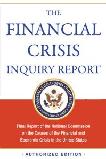
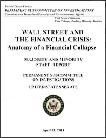














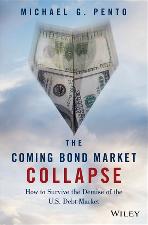



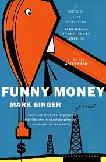
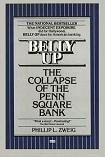



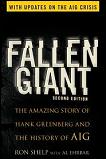
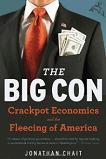
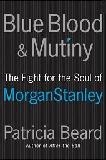

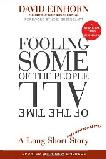



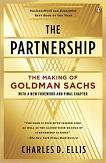


![]()
